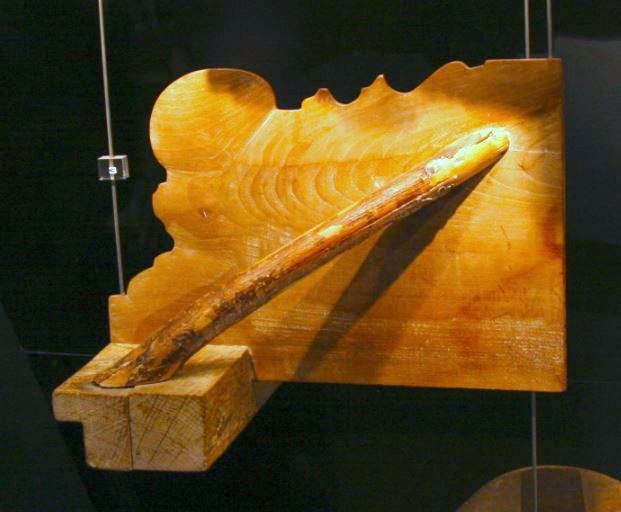Tools of the Trade: Inspiration from the Past
Tools of the Trade: Inspiration from the Past

If you look at the inside cover of my book you will find this picture. It is taken at the building tool museum in Troyes, France. It is an awesome multi-story museum filled with cases (like this) of tools for crafting and building. This particular case displays timber framing axes used by craftsmen to fell and shape timbers. It is poignant to me because it is easy to forget, that before the rise of lumber mills, making timbers from logs was all done by hand.
A closer look at these axes and timber tools reveals their wonderful variety and individuality. Note the shape and size of the handles; some are long, some are short, some are curved, some are even left-handed. Each one is shaped and beveled to conform to the hands of each craftsmen. The craftsman’s experience would taught him that some handles break too easily, some give blisters and some aren’t quite big enough, and some need a stop so they don’t slip from my hands.

The variety and shapes of the axe faces are also revealing. Some are elongated, evidently designed to fit into a narrow spot; maybe a mortise, or maybe the deep crotch of a tree. Some have a small cutting blade, some are very wide which of course would have allowed you to sheer off more wood with each swing. Thought, care and wisdom went into the design of these tools.
To follow are some of my favorite pictures from the museum.
To start the museum is filled with many half-scale building models. These wonderful works help the craftsman work out complex shapes and construction challenges. For example, this circular stair model may have been built to work out the radius challenges of inside and outside rails. …you may also note some children who can’t seem to stay out of the pictures. . .

This is a beautiful bow front window model. The bow front window is a great test as compound curves pushes the limits of a craftsman’s skills. Much like in boat building, getting a piece of wood to curve in 2 directions is quiet hard. It is the pinnacle in the art of woodworking.

My favorite, was this window model below. Even built with operating miniature shutters and hardware. The French casement window (which is an in-swing-window) is hard to build. It requires precision and care that is a lost art of window making. This great miniature example had all the various parts and pieces. As a craftsmen and designer it was an inspiration. . . you may note my son is not quite as enthralled with the design…

From my perspective the museum is a celebration of craft. Thus, there were also fine examples of the tools which help the art of craft. This plaster screed was designed as a beautiful ceiling crown/cornice mold. This is a single tool that saves time and money. To build the same cornice in wood, requires at least 4 different moldings. Also, this type of tool is great for circular work where plaster is much less expensive than making curved moldings.

I love this roof tile with a graceful fish scale design.

Finally this slate crest detail I love because it highlights a functional and practical way of providing cresting for a roof ridge while at the same time shows off a well-crafted method of linking these top slates shingles so that they don’t need to be nailed at the top. Form and function in perfect harmony.

I write in Timeless House about the celebration of craft. The tool museum highlights the personality and genius of great craft. It demonstrates through tool and samples that form and function serve and decorate at the same time. This is part of Timeless design and craft.
-B

